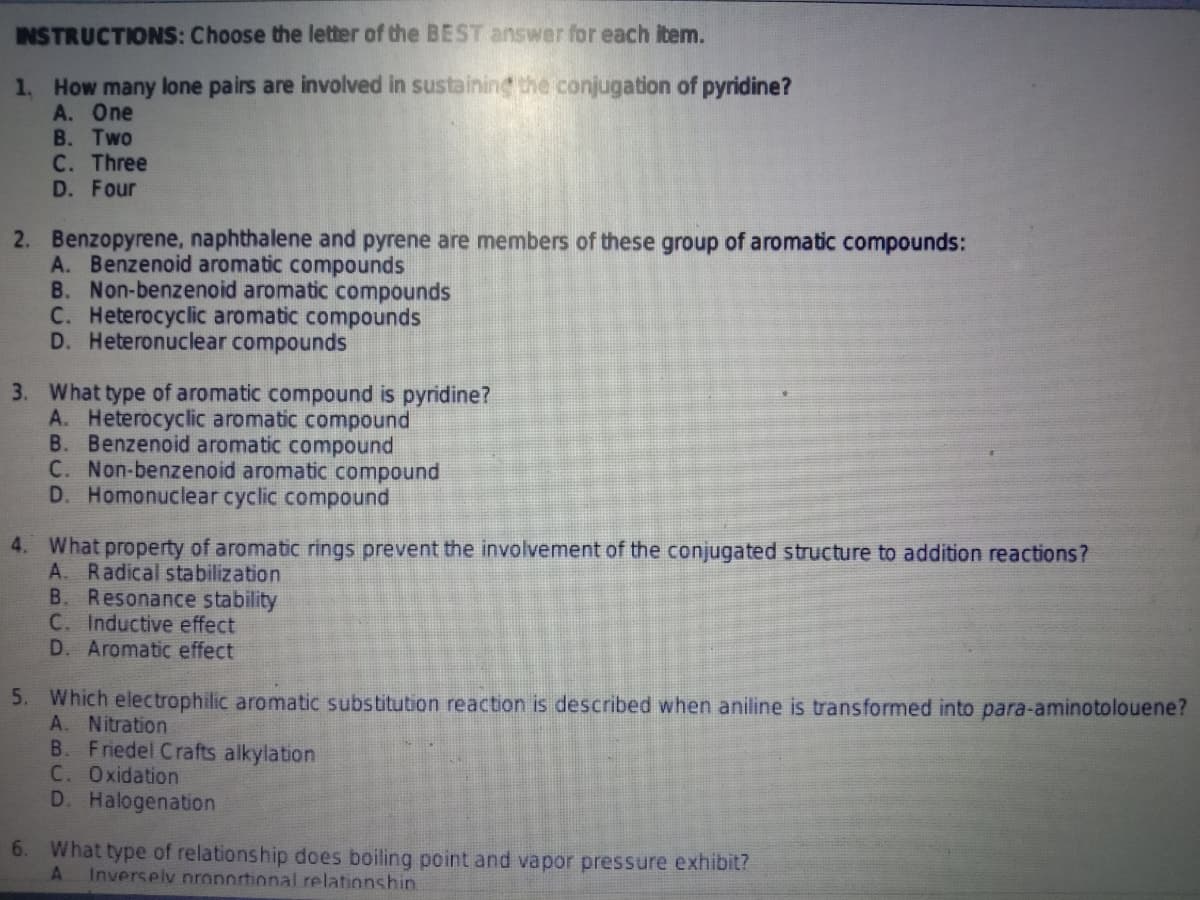INSTRUCTIONS: Choose the letter of the BEST answer for each item. 1. How many lone pairs are involved in sustaining the conjugation of pyridine? A. One B. Two C. Three D. Four 2. Benzopyrene, naphthalene and pyrene are members of these group of aromatic compounds: A. Benzenoid aromatic compounds B. Non-benzenoid aromatic compounds C. Heterocyclic aromatic compounds D. Heteronuclear compounds 3. What type of aromatic compound is pyridine? A. Heterocyclic aromatic compound B. Benzenoid aromatic compound C. Non-benzenoid aromatic compound D. Homonuclear cyclic compound 4. What property of aromatic rings prevent the involvement of the conjugated structure to addition reactions? A. Radical stabilization B. Resonance stability C. Inductive effect D. Aromatic effect 5. Which electrophilic aromatic substitution reaction is described when aniline is transformed into para-aminotolouene? A. Nitration B. Friedel Crafts alkylation C. Oxidation D. Halogenation 6. What type of relationship does boiling point and vapor pressure exhibit? Inversely pronortional.relationshin
Electronic Effects
The effect of electrons that are located in the chemical bonds within the atoms of the molecule is termed an electronic effect. The electronic effect is also explained as the effect through which the reactivity of the compound in one portion is controlled by the electron repulsion or attraction producing in another portion of the molecule.
Drawing Resonance Forms
In organic chemistry, resonance may be a mental exercise that illustrates the delocalization of electrons inside molecules within the valence bond theory of octet bonding. It entails creating several Lewis structures that, when combined, reflect the molecule's entire electronic structure. One Lewis diagram cannot explain the bonding (lone pair, double bond, octet) elaborately. A hybrid describes a combination of possible resonance structures that represents the entire delocalization of electrons within the molecule.
Using Molecular Structure To Predict Equilibrium
Equilibrium does not always imply an equal presence of reactants and products. This signifies that the reaction reaches a point when reactant and product quantities remain constant as the rate of forward and backward reaction is the same. Molecular structures of various compounds can help in predicting equilibrium.

Trending now
This is a popular solution!
Step by step
Solved in 3 steps with 3 images


